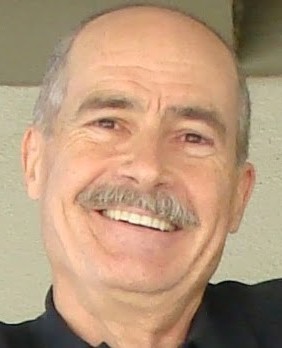-
(b.) - ?1955
Bio/Description
An American software engineer, security researcher, and IT security gadfly, in the early 1980s, he was best known for his work on light pen technology for use with Apple and Atari systems. Born in Dayton Ohio, he began working on computers as a teenager, and got his first computing job with Stanford University's artificial intelligence lab when he was 15 years old. He studied Electrical Engineering and Computer Science at the University of California, Berkeley. He was hired as a programmer for California Pacific Computer Company in 1980, where he worked on copy protection for the company's products. He is an advocate of assembly language programming, and prides himself on writing smaller applications mostly in Intel x86 assembly language, including much of the code of the SpinRite hard disk utility used at the beginning of the PC era. He is one of several advocates of optimizing computer programs and reducing the size of their executables. In 1985, he founded Gibson Research Corporation, best known for its SpinRite software, a computer software program for scanning magnetic data storage devices such as hard disks, recovering data from them and refreshing their surfaces. In 1999, he created one of the first adware removal programs, which he called OptOut. He founded Gibson Laboratories in Laguna Hills, California in 1981 which developed a light pen for the Apple II, Atari, and other platforms and went out of business in 1983. In 1985 he founded Gibson Research Corporation (GRC), a computer software development firm. From 1986 to 1993 he wrote the "Tech Talk" column for InfoWorld magazine. In 2001, he predicted that Microsoft's implementation of the SOCK_RAW protocol in the initial release of Windows XP would lead to widespread chaos by making it easier for Windows XP users to create Denial of Service (DoS) attacks. In that year, his company's website was brought down by a DoS attack generated, it is said, by a "13-year-old amateur hacker"; the attacks continued for two weeks. He blogged about the attacks and his efforts to track down the hacker. The internet did not collapse, but three years after the Windows XP release, Microsoft limited raw socket support in Service Pack 2. In 2005 he launched a weekly podcast called "Security Now" with Leo Laporte on TWiT.tv, with its archives hosted on GRC's website. GRC has created a number of niche utilities, most of which are freeware to include: DNS Benchmark, freeware that lets users test the performance of the domain name servers used by their internet service providers. Securable, freeware to test whether a pre-Windows 7 computer is 64-bit compatible. It also tells the user if Data Execution Prevention is enabled. Shields Up, a free browser-based firewall testing service; one of the oldest available. SpinRite, a hard disk scanning and data recovery utility first released in 1988. As of February 2015 the current version was 6.0, which was first released in 2004. SpinRite is a commercial product, costing $89 as of February 2015. His work on SpinRite has led to him being considered an expert on hard drive failure. Spoofarino, freeware released in 2006 and promised since the controversy over the launch of Windows XP in 2001, it enables users to test whether their internet service providers allow them to send forged or "spoofed" packets of data to his website. In 2006 he suggested that a bug, the Windows Metafile vulnerability, was actually a backdoor intentionally engineered into the system. The accusation became an assertion and spread through the internet as a rumor after the technology news website Slashdot picked up his speculation. The rumor was widely debunked and Thomas Greene, writing in The Register, attributed his mistake to "his lack of security experience" and called him a "popinjay expert." Publications he has authored include: (1991), ?A Passion for Technology, 1986 - 1990 Cumulative Index and 1986?, Aliso Viejo, California: Gibson Research Corporation. ISBN 1-880814-86-2; (1991), ?A Passion for Technology Volume One 1987?, Aliso Viejo, California: Gibson Research Corporation. ISBN 1-880814-87-0; (1991), ?A Passion for Technology Volume Two 1988?, Aliso Viejo, California: Gibson Research Corporation. ISBN 1880814889; (1991), ?A Passion for Technology Volume Three 1989?, Aliso Viejo, California: Gibson Research Corporation. ISBN 1-880814-89-7; and (1991), ?A Passion for Technology, Volume Four 1990? Aliso Viejo, California: Gibson Research Corporation. ISBN 1880814897. He currently lives in Laguna Hills, California. His writings try to provide visibility into the world of hackers and crackers, of which he counts himself one of the former.
-
Date of Birth:
1955 -
Noted For:
Creator of one of the first adware removal programs, OptOut -
Category of Achievement:
-
More Info:


